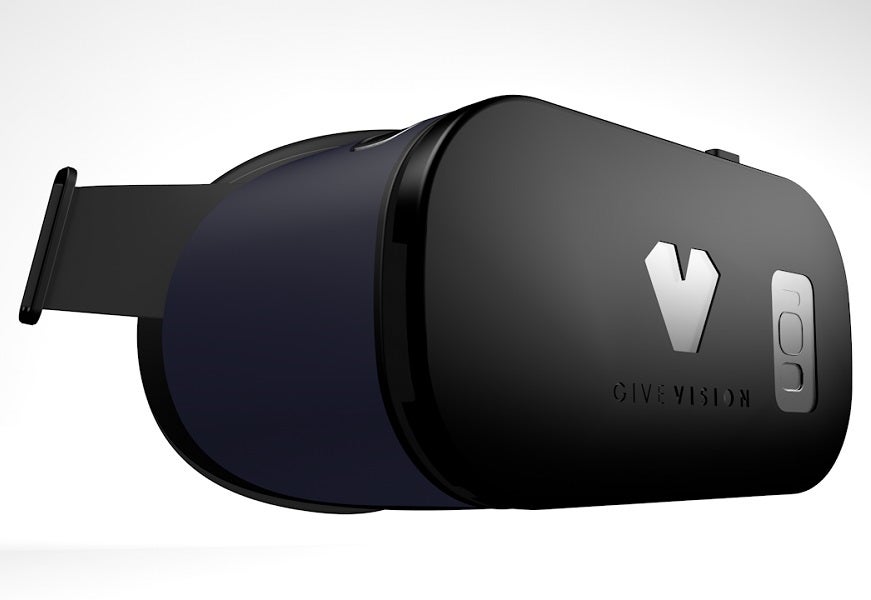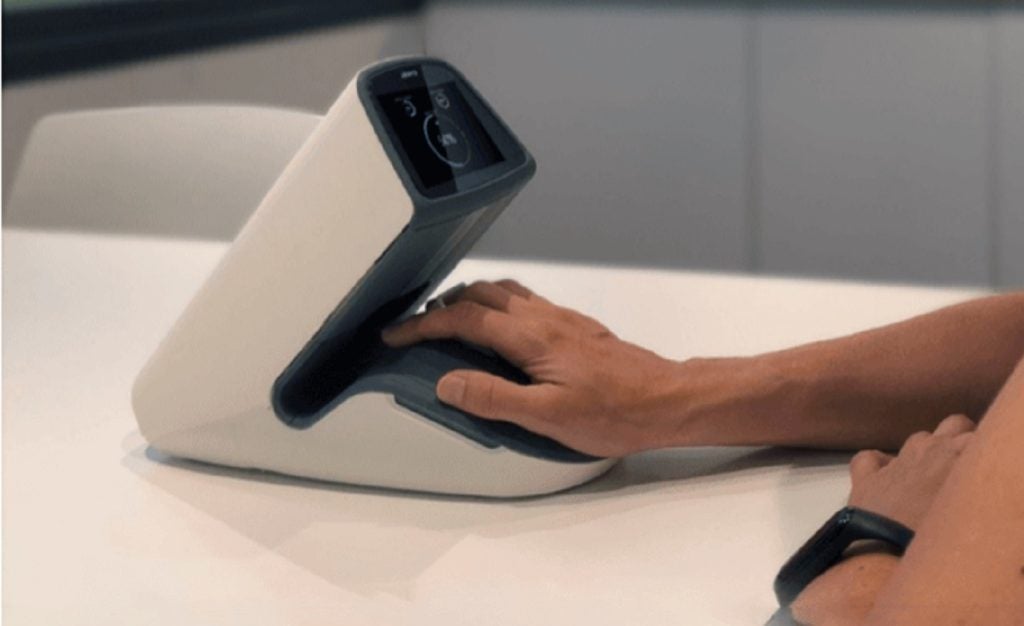
With age-related illnesses such as macular degeneration, cataracts and glaucoma on the rise, it’s estimated that nearly three million people in the UK will be living with a visual impairment by 2030. Alongside the loss of vision comes a loss of independence and security, as many people begin to struggle more and more with everyday tasks as their condition deteriorates. Everyday tasks like grocery shopping or reading a book can become impossible when a person can’t see the products in front of them or read the words on a page, and many people are forced to rely on rudimentary devices like a magnifying glass to see them more clearly.
Now, British electronics company GiveVision has developed a virtual reality (VR) headset called SightPlus, which has been found to significantly improve vision for people with sight loss. The device is designed to be used by people whose sight loss has deteriorated to the point where glasses or surgery are no longer able to correct it.
In a study conducted at Moorfields Eye Hospital, nearly 70% of participants reported that their visual acuity was enhanced to 0.2 logMAR. This metric is used to measure low vision, and represents a nearly normal degree of sight, with a score of 0 logMAR being equivalent to 20/20 vision.
GiveVision CEO Stan Karpenko says: “To understand how it works we need to understand the patient a little bit. The ideal patient for SightPlus is someone that has lost central sight – the world appears very blurry to them. They can sort of see lights and maybe shapes and silhouettes, but they cannot really distinguish people’s faces. These patients already use a magnifying glass, because if they can increase the size of a picture of text then their peripheral vision can figure it out.”
A grey and cream world
SightPlus works by using its camera to enlarge and enhance the world around the user. Instead of having to get up close with a magnifying glass to look at an object, SightPlus enables people to approach the world from a more intuitively.
It’s perhaps best explained by Michael Mason, the longest user of the device, who has had one for the past three years.
How well do you really know your competitors?
Access the most comprehensive Company Profiles on the market, powered by GlobalData. Save hours of research. Gain competitive edge.

Thank you!
Your download email will arrive shortly
Not ready to buy yet? Download a free sample
We are confident about the unique quality of our Company Profiles. However, we want you to make the most beneficial decision for your business, so we offer a free sample that you can download by submitting the below form
By GlobalData“SightPlus was totally life changing for me,” he says. “I used to listen to television. If I wanted to see I had to sit 12 inches away from it. Now I’ve got SightPlus I can sit where I used to sit, eight feet away. Everything’s back in colour. Prior to having SightPlus, I was living in a grey and cream world.
“It’s made my life safer. I can read medication dosage rates myself, I use online banking now and I can write my own cheques out. The uses for me have been endless. I certainly wouldn’t like to be without it.”
Mason has macular degeneration. The first time he used the device he went from being unable to see an optician’s sight chart to being able to read the entire board. While users aren’t advised to wear SightPlus when walking around, due to his experience with the device Mason says he is able to take it with him when shopping to pick out clothes and food.
Once a person has SightPlus on, they can use a remote control to adjust the level of enhancement they need. Watching television will obviously require different settings to reading a book and the image SightPlus displays can be adjusted accordingly.
The colour scheme can also be adjusted to a level which is comfortable, and the device can adjust in real time to the lighting conditions surrounding the user. Users are also able to take screenshots of what they’re looking at, which Karpenko suggests could be particularly useful for students who want to take photos of lecture slides.
Downsizing and diagnostics
Currently, patients can access the device through GiveVision. It can be purchased outright for £2,955, or accessed through a monthly subscription plan, which costs £495 in down payments followed by a monthly instalment of £55. Otherwise, patients can apply to be part of a future trial into the efficacy of the device. The device has also been approved for financial coverage through the UK’s Disabled Student Allowance and Access to Work Allowance schemes, so people who could benefit from the device in their place of study or work can access it more easily.
GiveVision is now in the process of developing a less bulky, more wearable version of SightPlus.
Karpenko says: “We’re in the late stages of manufacturing the new device. It will be smaller and it will be lighter, less than 100g of pressure on your nose bridge in terms of the overall weight. It will be a lot more comfortable and you can wear it for longer.”
As well as being a better size, the new version will come with certain diagnostic capabilities. It will be able to track disease progression and potentially notify a person’s doctor if their vision is getting worse. For patients with conditions which need close monitoring, such as those with diabetic retinopathy who need to have sight tests every three to six months, this could be life-altering.
Karpenko says: “We have a lot of cases of underdiagnosed conditions that could have been prevented. I think that adding diagnostic elements to our device is going to make it a lot more useful for the healthcare system, and patients too.”
Not everybody has found themselves enamoured with SightPlus. Less than half of the participants in the Moorfields Eye Hospital study indicated that they would actually choose to use the device in their daily life, particularly those who had been affected by sight loss for longer. Mason is one of six brothers, five of whom have macular degeneration, and he’s struggled to get his siblings interested in the product. But for those who find it works for them may well find it life-changing.







